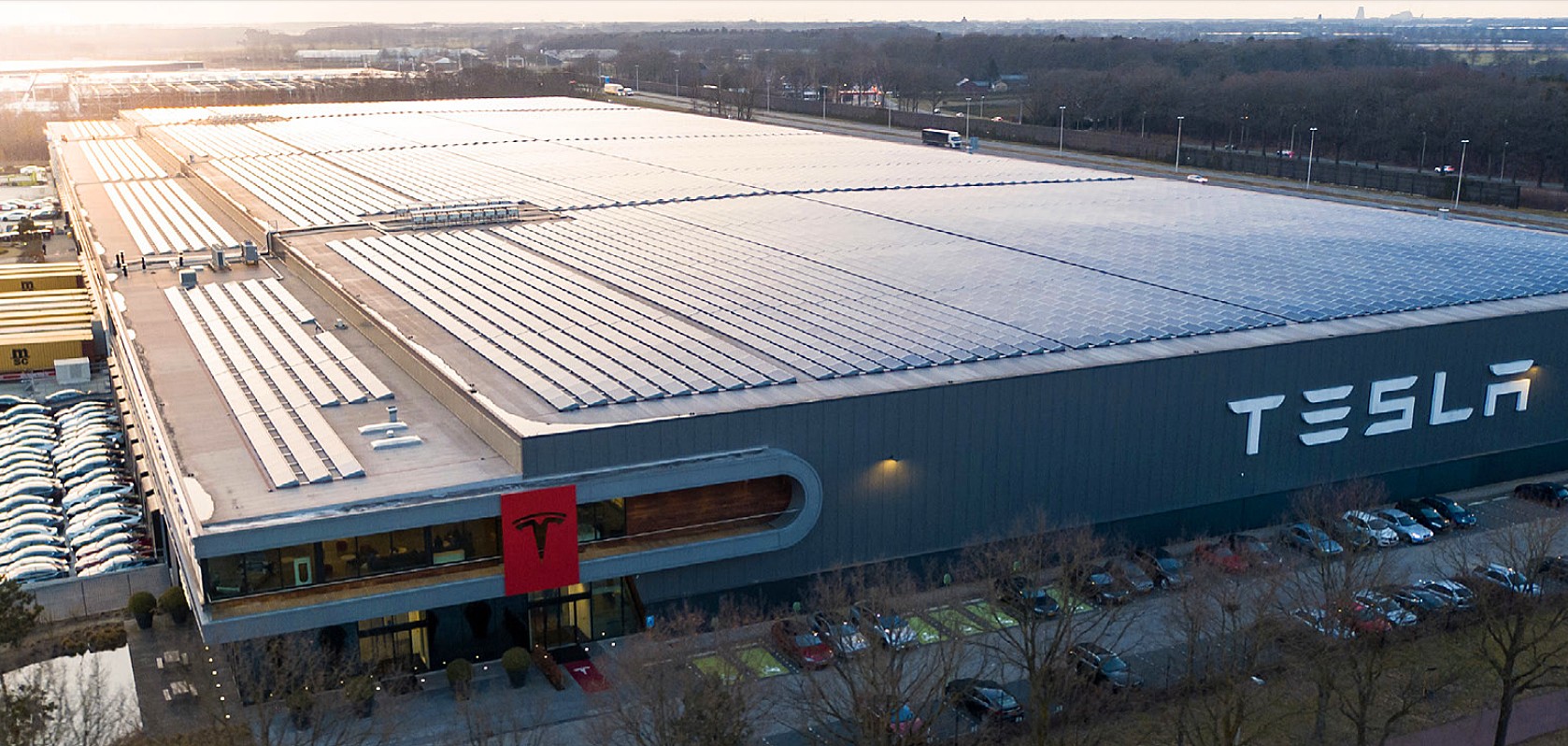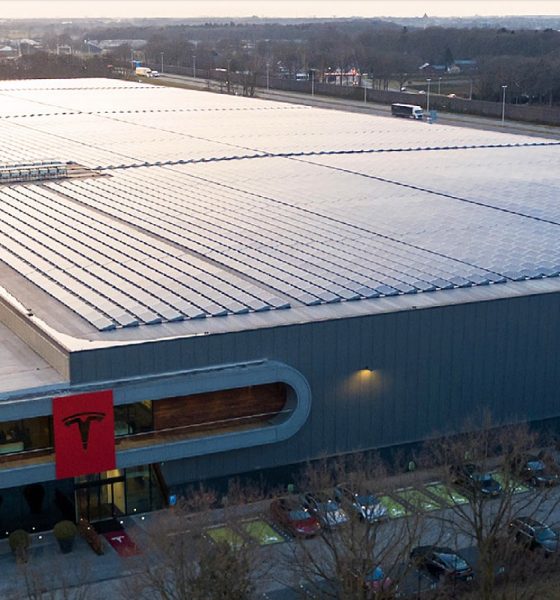

News
Indian carmakers set to propose import duty rollback, but Tesla will miss out
Indian automakers are finally set on proposing the idea of budging on import duties that would allow foreign automakers to sell cars in the market for a reduced tax. However, the deal is being used as a part of a potential trade deal with Britain, which would not help Tesla finally enter the market.
A report from Reuters stated that this is the first time Indian carmakers have backed import duty rollbacks as the government is encouraging the companies to relinquish their need for ultimate control of the country’s automotive market. The report included a quote from an anonymous source that stated India’s Commerce Minister, Piyush Goyal, told the country’s automakers, represented by the lobby group Society of Indian Automobile Manufacturers (SIAM), that they needed to budge or the government would make them budge.
“The message from Goyal was clear – if companies don’t come up with a proposal on lowering taxes, the government will do it for them,” the source said.
The rollbacks will only affect car factories run in Britain, which includes Nissan, BMW, and Jaguar Land Rover. However, SIAM is potentially worried about the idea that this move could set the precedent of reduced import duty negotiations with other regions, including the EU, Japan, or South Korea. However, Goyal’s intensity regarding his desire for some movement on the duties remains.
Tesla will miss out on the duties…unless it builds a production facility in Britain
Tesla will unfortunately not be able to take advantage of the reduced import duties, which is something the company has petitioned hard for. Tesla has tried for several years to enter India, but it first wanted to test the demand levels for its vehicles through imports. If Tesla could justify building a factory in India through strong sales figures with reduced import duties, it would commit to building a Gigafactory in the country, Elon Musk said. However, India was unwilling to do this unless Tesla explicitly committed to building a factory first.
Tesla will get benefits if it produces cars in India, says transport minister
This would have been a monumental risk because there is a chance that Tesla’s cars would not sell well in India. Then, without having adequate demand, they would spend hundreds of millions of dollars to build a factory in a country where an inadequate number of customers buy the cars.
It was a strike to Tesla’s plans: the company was definitely interested. It had hired a team specific to the Indian market, outfitted with experts in the country.
While Tesla is certainly exploring the potential for a new Gigafactory, Canada is the favorite. However, the UK, which is constituted by Britain and Northern Ireland, was considered at one point for a Gigafactory location, as reported in 2020 and 2021.
In 2020, Tesla was rumored to be a potential suitor for a 650-acre site in Somerset, a county in South West England. A spokesperson for the Department of International Trade indicated that it was “working closely with partners to scope out sites for new investment into electric vehicle research, development, and manufacturing across the UK.” Speculation only continued when Minister of State for Business Kwasi Kwarteng supported the potential Tesla factory, stating that Somerset has the “manufacturing skill and competence to be able to sustain an excellent Gigafactory.”
Ultimately, nothing came of those rumors, and Tesla’s next Gigafactory will most likely end up in Canada.
I’d love to hear from you! If you have any comments, concerns, or questions, please email me at joey@teslarati.com. You can also reach me on Twitter @KlenderJoey, or if you have news tips, you can email us at tips@teslarati.com.

News
Tesla FSD fleet is nearing 7 billion total miles, including 2.5 billion city miles
As can be seen on Tesla’s official FSD webpage, vehicles equipped with the system have now navigated over 6.99 billion miles.

Tesla’s Full Self-Driving (Supervised) fleet is closing in on almost 7 billion total miles driven, as per data posted by the company on its official FSD webpage.
These figures hint at the massive scale of data fueling Tesla’s rapid FSD improvements, which have been quite notable as of late.
FSD mileage milestones
As can be seen on Tesla’s official FSD webpage, vehicles equipped with the system have now navigated over 6.99 billion miles. Tesla owner and avid FSD tester Whole Mars Catalog also shared a screenshot indicating that from the nearly 7 billion miles traveled by the FSD fleet, more than 2.5 billion miles were driven inside cities.
City miles are particularly valuable for complex urban scenarios like unprotected turns, pedestrian interactions, and traffic lights. This is also the difference-maker for FSD, as only complex solutions, such as Waymo’s self-driving taxis, operate similarly on inner-city streets. And even then, incidents such as the San Francisco blackouts have proven challenging for sensor-rich vehicles like Waymos.
Tesla’s data edge
Tesla has a number of advantages in the autonomous vehicle sector, one of which is the size of its fleet and the number of vehicles training FSD on real-world roads. Tesla’s nearly 7 billion FSD miles then allow the company to roll out updates that make its vehicles behave like they are being driven by experienced drivers, even if they are operating on their own.
So notable are Tesla’s improvements to FSD that NVIDIA Director of Robotics Jim Fan, after experiencing FSD v14, noted that the system is the first AI that passes what he described as a “Physical Turing Test.”
“Despite knowing exactly how robot learning works, I still find it magical watching the steering wheel turn by itself. First it feels surreal, next it becomes routine. Then, like the smartphone, taking it away actively hurts. This is how humanity gets rewired and glued to god-like technologies,” Fan wrote in a post on X.
News
Tesla starts showing how FSD will change lives in Europe
Local officials tested the system on narrow country roads and were impressed by FSD’s smooth, human-like driving, with some calling the service a game-changer for everyday life in areas that are far from urban centers.

Tesla has launched Europe’s first public shuttle service using Full Self-Driving (Supervised) in the rural Eifelkreis Bitburg-Prüm region of Germany, demonstrating how the technology can restore independence and mobility for people who struggle with limited transport options.
Local officials tested the system on narrow country roads and were impressed by FSD’s smooth, human-like driving, with some calling the service a game-changer for everyday life in areas that are far from urban centers.
Officials see real impact on rural residents
Arzfeld Mayor Johannes Kuhl and District Administrator Andreas Kruppert personally tested the Tesla shuttle service. This allowed them to see just how well FSD navigated winding lanes and rural roads confidently. Kruppert said, “Autonomous driving sounds like science fiction to many, but we simply see here that it works totally well in rural regions too.” Kuhl, for his part, also noted that FSD “feels like a very experienced driver.”
The pilot complements the area’s “Citizen Bus” program, which provides on-demand rides for elderly residents who can no longer drive themselves. Tesla Europe shared a video of a demonstration of the service, highlighting how FSD gives people their freedom back, even in places where public transport is not as prevalent.
What the Ministry for Economic Affairs and Transport says
Rhineland-Palatinate’s Minister Daniela Schmitt supported the project, praising the collaboration that made this “first of its kind in Europe” possible. As per the ministry, the rural rollout for the service shows FSD’s potential beyond major cities, and it delivers tangible benefits like grocery runs, doctor visits, and social connections for isolated residents.
“Reliable and flexible mobility is especially vital in rural areas. With the launch of a shuttle service using self-driving vehicles (FSD supervised) by Tesla in the Eifelkreis Bitburg-Prüm, an innovative pilot project is now getting underway that complements local community bus services. It is the first project of its kind in Europe.
“The result is a real gain for rural mobility: greater accessibility, more flexibility and tangible benefits for everyday life. A strong signal for innovation, cooperation and future-oriented mobility beyond urban centers,” the ministry wrote in a LinkedIn post.
News
Tesla China quietly posts Robotaxi-related job listing
Tesla China is currently seeking a Low Voltage Electrical Engineer to work on circuit board design for the company’s autonomous vehicles.

Tesla has posted a new job listing in Shanghai explicitly tied to its Robotaxi program, fueling speculation that the company is preparing to launch its dedicated autonomous ride-hailing service in China.
As noted in the listing, Tesla China is currently seeking a Low Voltage Electrical Engineer to work on circuit board design for the company’s autonomous vehicles.
Robotaxi-specific role
The listing, which was shared on social media platform X by industry watcher @tslaming, suggested that Tesla China is looking to fill the role urgently. The job listing itself specifically mentions that the person hired for the role will be working on the Low Voltage Hardware team, which would design the circuit boards that would serve as the nervous system of the Robotaxi.
Key tasks for the role, as indicated in the job listing, include collaboration with PCB layout, firmware, mechanical, program management, and validation teams, among other responsibilities. The role is based in Shanghai.
China Robotaxi launch
China represents a massive potential market for robotaxis, with its dense urban centers and supportive policies in select cities. Tesla has limited permission to roll out FSD in the country, though despite this, its vehicles have been hailed as among the best in the market when it comes to autonomous features. So far, at least, it appears that China supports Tesla’s FSD and Robotaxi rollout.
This was hinted at in November, when Tesla brought the Cybercab to the 8th China International Import Expo (CIIE) in Shanghai, marking the first time that the autonomous two-seater was brought to the Asia-Pacific region. The vehicle, despite not having a release date in China, received a significant amount of interest among the event’s attendees.








